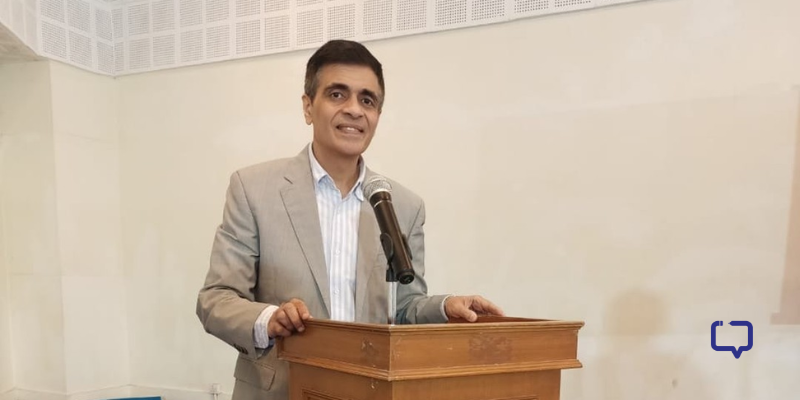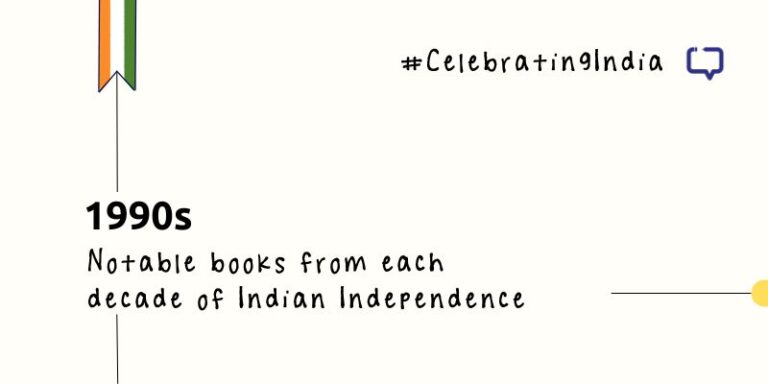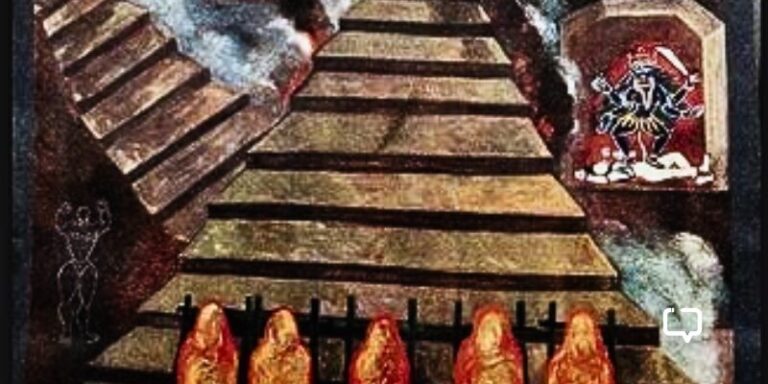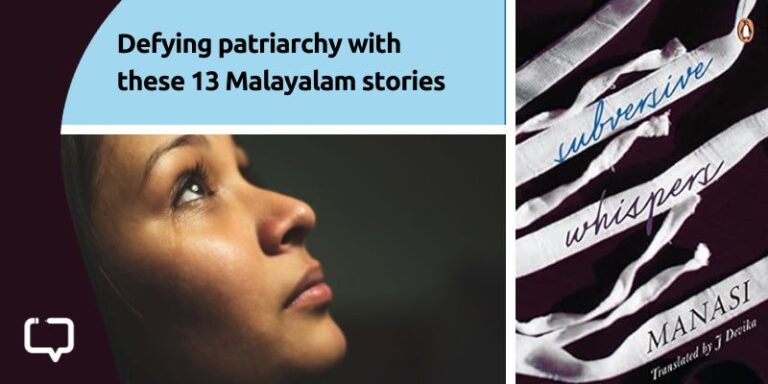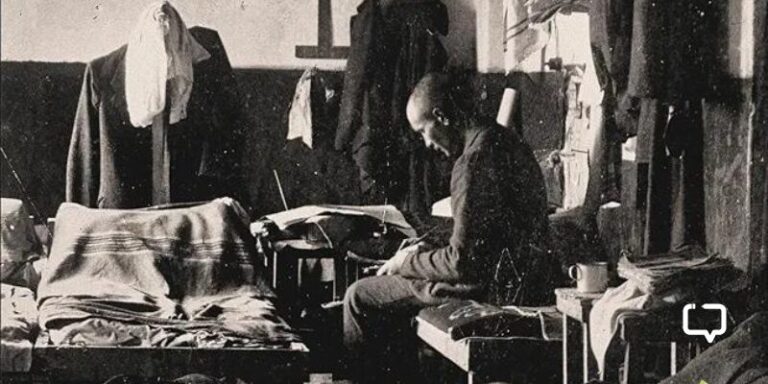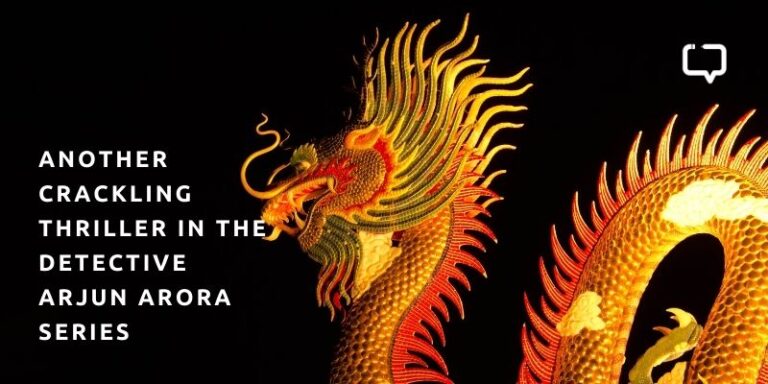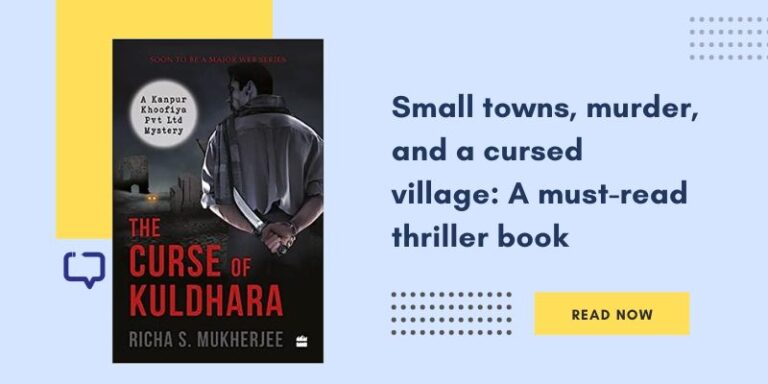Prakruti Maniar from Team P3 was in conversation with Jigs Ashar, a bestselling author with works like Insomnia, Brutal Hand, and The Cabinet Conspiracy.
Jigs Ashar is a banker-turned-author who deftly balances several roles. In this conversation, he shares his journey of becoming an author, from his inspirations and writing processes to his creative processes.
In Conversation with Jigs Ashar
Prakruti Maniar: You are an author, banker, and runner. Do you identify in that order of roles?
Jigs Ashar: Not one of them takes precedence over the other at all times, but I’m one of these three at any point in time. When I want to be creative, I’m an author. Of course, professionally, writers have to keep the kitchen fires burning. That’s where the banking bit comes in. And I’ve always been a banker. I’ve been in the banking field for 28 years now. And of course, running is for mental and physical fitness, which I think is very essential to every one of us. So, I wear these three hats interchangeably during the day.
Prakruti Maniar: You started writing with a short story for the Times of India—Write India competition. How did the inspiration to write the first story come about after years in banking, consultancy, and a very corporate setup? What kind of journey has it been?
Jigs Ashar: It was by chance, actually. I was with an MNC bank in 2017. That was 18 years with the bank, highly corporate, working with overseas markets, etc. All credit goes to my wife, Vidya, who always thought I should write something. She found out about a creative writing course at Xavier’s Institute, which was very close to where I was working at that time in South Bombay. It was an evening course that went on for nine weeks, and you learned the different facets of writing. And she said, “I think you will enjoy this course. Why don’t you do it?”
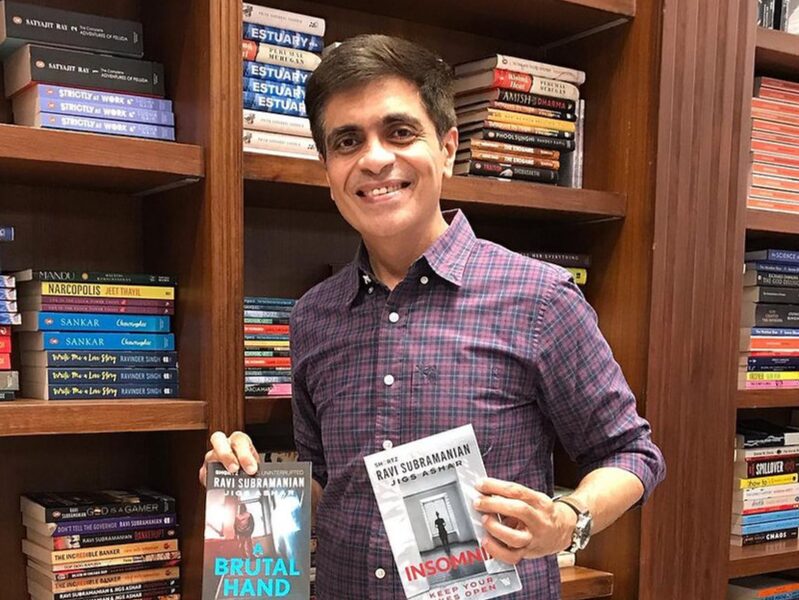
I was very reluctant. Finally, on the last day, when you had to pay the fees and take admission, she gave me a deadline: if you don’t go today, I will go pay the fees. That was more like a threat. So I just went and paid the fees. That was the beginning of my taking writing more seriously. Whenever there was a session, we had to make a few submissions of short stories, etc. The professor there said, “Don’t give it up, Jigs. I see something, and please pursue this.” That was encouraging.
My life as a writer has been full of coincidences, and I’ve been very fortunate. The Write India contest, a national short story writing contest organized by the Times of India group, was on at the time of its season two. One day in the Times of India, I saw a big photo of Jeffery Archer, probably a favourite amongst all the readers. So is mine. He was the Author of the Month and had been given a prompt to write a thriller. I said, okay, let me participate.
I wrote my first short story titled “The Wait Is Killing.” I was thrilled that I won. And the judge was none other than Jeffrey Archer. Everything was falling into place around the same time. The next month, I again participated in Write India; at that time, the judge was Miss Shobha De. I wrote a humorous slice-of-life story. Again, I won. Those were encouraging enough.
Around the same time, Ravi Subramanian was one of India’s leading authors and novelists. He read “The Wait is Killing” and called me one day and said, “Jigs, I’m working with Westland Publications, which is an Amazon group company, to mentor and give debut authors a chance to write thrillers. Would you be interested in writing a novel?” I said, why not? Neki aur pooch pooch (a good deed needs no counsel). I said, certainly.
He said, “Okay, come to my office whenever you’re ready with some ideas we’ll discuss.” Within a couple of weeks, I went to him with three ideas and three storylines. He liked two of them, and that’s how my first novels, Insomnia and The Brutal Hand, were published. So yes, very lucky in that sense. Another first time I had as a writer was when both my books were released on the same day, 7th September 2020. So, I can’t say one is my debut novel. Both of them are.
Prakruti Maniar: This is the Filmfare equivalent of getting both the Best Debut and Best Actor awards in the same year. That’s amazing. Did you have a history of storytelling or a passion for storytelling in any form before that? Which made Vidya think that this is something you’d enjoy. Were you a voracious reader before you started writing?
Jigs Ashar: When my daughter was young, I would tell her a story every night. She wouldn’t sleep without listening to a story, and it wasn’t that I would read from a book. She would want me to create something new every night. That was probably it, in terms of my storytelling capability, at that time.
But there must have been something buried in my subconscious that never came to the fore until I signed my first contract for Insomnia and The Brutal Hand, and it took me back to my school days. I remember it was the ninth standard, and we all had to write essays in school. Once, my English teacher, Mrs. Mehta, called me to the staff room, and like all kids, I was worried that if kids were called to the staff room, it would probably be for detention.
But she called me, and she was correcting papers. She was reading my essay. She just told me this one sentence, “I read your essay. I really enjoyed it. And someday, you’re going to write a book.” I had completely forgotten about this incident. Just when I signed my contract, the realization that “Oh God, I’m going to be a published author” all came about.
Prakruti Maniar: The Cabinet Conspiracy concerns the government’s political administration and civic workings. Did you have to research that a lot? We know what happens in the public, but often, there are only Lok Sabha or Rajya Sabha proceedings that you have as an insight into what happens behind doors, and maybe hearsay, rumours, and stuff that’s portrayed in movies that we are told is based on a certain truth. But there’s no way to get your personal eye into that. What was your process to get those things in place?
Jigs Ashar: Any political thriller, in whichever country it is based in, cannot be pure fiction. When you’re talking about real politicians or a cabinet, as I’m speaking, it has to be based on truth because the reader will say, yes, this is true. There is a position like that. There is a prime minister and a geopolitical issue that the author is trying to discuss. Those have to be real. So, the real part of my story had to be thoroughly well-researched, and I used a series of methods to do that research.
So when you add these facts, fiction takes over a bit. Then you try adding a sinister layer to this factual political situation. How far could China go to get India’s prime minister out of the way? That’s how the idea of the story was born.
– Jigs Ashar
One was, of course, a lot of secondary research. Some of them are well known. For example, the tension between India and China is well-known. But it’s mind-boggling if you go a layer deeper and look at the Belt and Road initiative, China’s global ambition. The kind of economics they have in mind. This scale is crazy. All these are facts as we speak; none of them is fiction. Once you read that, you have a country, which is India.
It is a large country where China wants some interest but refuses to sign. Not only refuse to sign, but our Prime Minister, Mr. Modi, has actually gone on public record at various global forums, like the World Economic Forum, et cetera, and has, in a way, condemned the initiative and the debt it brings. So when you add these facts, fiction takes over a bit. Then you try adding a sinister layer to this factual political situation. How far could China go to get India’s prime minister out of the way? That’s how the idea of the story was born.
Coming back to the research that I did. If I did secondary research, I would always ensure the credibility of the source. It would never be from one source. So, I needed two or three corroborations from credible sources before I said this was true because I didn’t want a one-sided view, which could be painted in the media. Second, I also consulted with the World Bank. I still consult at the World Bank for Asia. I have been with a multinational bank for many years.
So, I know a lot of people from different geographies. There were certain things I would anecdotally bounce off my colleagues from other countries, such as, Hey, I’m reading this, or What do you think about this particular issue? They would always share some insight that was not published or available on paper. I used a mix of these various types of research to write the book.
Prakruti Maniar: A book never has one genesis. Stories come in parts sometimes. Sometimes, they come as one idea. How long did putting this information and your idea into a book take?
Jigs Ashar: The Cabinet Conspiracy, the idea about the BRI and India, and China thinks that, okay, let’s get India’s prime out of the way, uh, and let’s assassinate the Prime Minister came to me in 2018. In April, I did an extensive reading on the BRI. Finally, the book was released in December 2023.
Prakruti Maniar: To have a sustained commitment to an idea in writing or any project is challenging. Did you face the same?
Jigs Ashar: One advantage that I have inherently is that I’m generally a very patient person. I generally don’t get worked up. I’m not impatient. I don’t want to do things in a hurry. And good things take time. For example, I started writing when I was 46. That’s fine.
Honestly, I didn’t get impatient or wanted to write something in a hurry, or I was never in a hurry to publish the book and get it out. I waited for the right publisher. I waited for the publisher to be as excited about the story as I was. So I waited for that. I’m happy with the way it is. It’s taken time, but I’m happy with how it is.
Prakruti Maniar: The muscles required to write short stories and the muscles needed to write novels are different. You have had six books out in a fairly shorter span of three years. That muscle development takes time and a lot of polish. It takes a lot of patience and a lot of continuous creative upgrading. Did you face that once you went from short stories to the first two novels?
Jigs Ashar: Both have their own sets of challenges and the excitement they bring in terms of creativity. Short story, of course; for example, in Write India, the word limit is 3000 words. If you technically look at a story, it needs an introduction, a conflict, action, a climax, a conclusion, et cetera. Everything has to be there for it to be a good story. In terms of drafting and redrafting, short stories take a little longer to my mind. Whereas when you are writing a novel, two things are more important.
When you are writing a novel, two things are more important. If it’s something like The Cabinet Conspiracy, where there are a lot of real events, and there is fiction, then the research has to be A grade. You can’t falter on that.
– Jigs Ashar
If it’s something like The Cabinet Conspiracy, where there are a lot of real events, and there is fiction, then the research has to be A grade. You can’t falter on that. The second one is, because it’s a longer format, how do you ensure you’re holding the reader’s attention? The pacing of the novel. When you’re writing about real events, or even if it’s pure fiction, it can’t get very detailed and dragged out, even for a moment.
So, the pacing and research you do, or how much detail you put in, is a challenge. Sometimes, in a longer format novel, because multiple characters and threads run for the story, all have to tie in in a very organic manner for the reader. The reader can’t say, “Hey, what happened to that character?”
I’ve grown up reading thrillers. So, I’ve read different genres, but I really enjoyed reading thrillers. I believe that I should write what I enjoy reading. So yes, the first and next three in the pipeline are all thrillers.
– Jigs Ashar
Both are interesting, but the shift back is difficult once you move to novel writing. I’ve not written a short story since the first three. I mentioned two, and in the same year, in 2018, I wrote another one called “Duel,” which was also shortlisted by Juggernaut for the Short Story of The Year Award.
Prakruti Maniar: You’ve primarily written thrillers, except for the one short story, “Slice of Life.” What is it about the genre that keeps you coming back to it repeatedly?
Jigs Ashar: I have grown up reading thrillers. So I’ve read different genres, but I really enjoyed reading thrillers. I would have tried something funny and dramatic. For example, many Jeffrey Archer books are not exactly thriller thrillers, but just dramas. What I really enjoyed reading was a very natural, go-to genre when I started writing. That’s how it started. I believe that I should write what I enjoy reading. So yes, the first and next three in the pipeline are all thrillers. Of the three that are coming up, two are true crime stories.
I’m looking forward to that. And unless I’m completely bereft of ideas for writing thrillers, I’ll probably continue with this.
Prakruti Maniar: Two things about this as a writer. One is when you write much of what you watch or read; it’s a natural extension that sometimes makes you sound like them. In the writing process, if you’ve read a lot of thrillers, it’s very easy to sound like them, and it takes a minute to understand your voice in that genre.
The second challenge that would arise if you’re writing in the same genre is the repetition of tone. It’s easy to think in formulas if you’re thinking about thriller because the genre also lends itself to certain, easy, boxable formulas. Are you aware of these things? Were you aware of this going into your first two books and The Cabinet Conspiracy, and how are you navigating these ideas?
Jigs Ashar: I was a voracious reader, and I still read, maybe not voraciously, but I read. At any given point in time, I’m reading a book. What I learned from Jeffrey Archer, Agatha Christie, Robert Ludlum, Keigo Higashino, and Tom Clancy is how they develop a plot and the characters. How they create the lead and surrounding characters, how they tie up the loose ends, and how you want to keep turning page after page.
For a good story, there are three acts: introduction, conflict, and resolution. The first is the introduction of the characters. Then, you set the conflict and what the movie is all about. Then there is the rising action, the challenges to be faced, the climax, the falling action, and finally, the conclusion.
– Jigs Ashar
These are structurally what all these authors or a good storyteller would have in common. While studying writing, I realized that every good story, maybe not written, could even be a visual story. For example, if you look at Sholay and Dangal, they all have a very common pattern. They follow the same graph of a good story. There are three acts in a play, in a good story, in any medium. The first is the introduction of the characters.
Then, you set the conflict and what the movie is all about. Then there is the rising action. The challenges to be faced, there is a climax, then there is a falling action, and there is a conclusion. All these good stories and good books, irrespective of the writing style, because each is his or her own, followed a very similar structure, and that’s how I realized how a good story should be written. That’s something that I’ve learned, and I have taken over from these masters. If I look at being repetitive… My first book, Insomnia, was a psychological thriller. The Brutal Hand was about a serial killer. The Cabinet Conspiracy is a geopolitical, real-world thriller.

The next two are true crimes. In true crime, the plot and the tone, etc., will be different because they are based on true crime stories that have happened. Incidentally, one of them, the next to be released, is set around the Second World War in Madras. It was India’s first case where forensics was used to solve a murder mystery. The sixth book I’m writing is based on my years of experience in the financial world and is on financial crime.
How the world of finance and the world of terrorism are so intricately linked. There, I’ve taken a few real-life scams or incidents within the financial world that have happened. I wound it into a single story spanning 15-20 years in a particular bank. All of these are very different stories and different plots. Hopefully, by the time I’m done with these three more, by mid or end of 2025, I’ll have some new ideas to write about.
Prakruti Maniar: I’m sure. Good for storytellers, bad for life. Crime is always varied and never ends. There’s always something to be inspired by in that sense. You do have a lot of facets of crime. Did you end up understanding criminal psychology and forensic science through your writing? Did you have to touch and learn about these topics as well?
Jigs Ashar: So, for Insomnia, which is a psychological thriller, or for this new book, The Headless Victim, which is about the forensics case that I mentioned, I read many known books on that to understand. While this was the first case for India, it was already prevalent in other parts of the world.
Every individual has multiple facets and multiple talents, which are there. One just has to harness them and do them justice. And find the time to do justice to, if not all, then at least three or four of them.
– Jigs Ashar
So, I traced the history of forensics as a subject of how the first case ever happened, which was way back in some tribals, and somebody used, in a way not known as forensics. Still, they used some of those methods to identify the killer, etc. I did study a lot. I read many books because, as I mentioned, I want them to be well-researched if I’m writing on a subject. The reader should find it believable and plausible. This can happen, or I’ve seen that happen.
Prakruti Maniar: You’ve gone from being in banking, consulting, and the corporate MNC world to publishing. You’ve gone from conference rooms to lit fest rooms, and they are fairly different in terms of culture, general energy, dynamics, hierarchies, etc. There is a certain difference in how people behave with each other and what they talk about, in the topics of conversation, et cetera. What has that journey been for you?
Jigs Ashar: Of course, there is a journey. And even now, I still consult at the World Bank. I do a lot of professional consulting in the BFSI space. When you are there, you’ll be wearing a different hat. You have to switch off from being a writer or the creative part of you. When you’re writing, then you’re just being that creative self. Every individual has multiple facets and multiple talents, which are there. One just has to harness them and do them justice. And find the time to do justice to, if not all, then at least three or four of them. You find that time and inclination to do so.
Prakruti Maniar: When, for the first time, you had a book reading, a book launch, or a book lit fest, did you have a moment when you felt this was very different from my conference rooms?
Jigs Ashar: Certainly, there is one key difference. After my initial years in banking, one would be very confident in a conference room setting or meeting clients because you are talking about your pedigree and experience in the field for many years. Whereas here, as a writer, I’m probably… It’s my debut. Some bit of apprehension and anxiety are always there. It is a very new field. Will I succeed? Will people like it? A case in point is when, for Insomnia, I gave my first interview and I was wondering what to say. Will it go well? Will it not go well? With time, you learn and gain confidence, and the butterflies settle a bit.
On a lighter note, when I joined the classes at Xavier’s, on the first day, many undergrad students did that because either they were really interested or some did it because they wanted to show it on their resume. When I entered the class, everybody mistook me for the professor. Everybody was very young; graduates, undergraduates. Later, when I went in and sat with them, I realized that, okay, maybe I don’t belong here. I just shared it with my wife later that evening, and we laughed about it.
Prakruti Maniar: I love that you attended the course first. Many people would first jump into writing, and this is not to say that one is better than the other’s approach. Still, that really speaks to the methodical, planning mindset that would come with your consulting brain to even your approach to your journey as an author.
Being a writer is very creative, but again, being an author comes back to numbers and business. It’s a deal at the end of the day. The writing is the creative bit, and getting the story out is the creating bit, but the moment that that is done, it’s next about how I get to publishing. How do I sell it? How do I talk more about it? This is an out-and-out commercial transaction. That’s not a bad thing, but that is a thing that people don’t recognize enough.
Jigs Ashar: Absolutely. One thing I learned from my work life in the corporate was being very structured and organized. Even when I write the idea about a plot or pen down the story on paper, that’s how I work in the creative part. But then, when I get to it, it’s pure science. Because then, at least, I’m very organized.
Many times, even when I have writer’s block, I actually plan: I have this long run, I’m going to run these 15 kilometers, and I will crack this one.
Jigs Ashar
Every chapter would be written in four or five-line summaries first, so I know that no characters are out of the reader’s mind for a long time; all the loose ends are tied. When I start my novel writing, I have my 53-54 chapters in four, five lines each with me on Excel. Then, I have to elaborate on every chapter. I think 95 per cent of the time, I’ll stick to that structure and storyline.
Prakruti Maniar: What is your approach to managing the writing time, work time, consultation time, and family time during the day when you’re playing different roles? Do you have time divided for each role, or write whenever you have time?
Jigs Ashar: I am very organized, but I don’t write every day. I don’t have that discipline. For example, these days, I’m just talking about my book and travelling to literature festivals and book signing events, et cetera. I have not written for a while, but I’ll write my next book once this settles down. But I’m always thinking about my book. As I mentioned, I have all these chapters written down in summaries; if I’m stuck somewhere or will elaborate on some chapter, I’m always thinking about what to do when I’m running or travelling, et cetera. Then, I go back and edit my notes. That process is always on.
Prakruti Maniar: Physical exercise of any kind really fuels creativity. In my experience, anecdotal interviews, et cetera, I’ve learned that manual labour is the best fuel to accelerate the brain’s creativity. Do you also get your best ideas while running? Have you experienced that?
Jigs Ashar: Many times. Even when I have writer’s block, I plan: I have this long run, I’m going to run these 15 kilometres, which is roughly around 105-110 minutes. I will run alone and crack this one. I’ve been thinking about that particular point that I have to crack in my writing, and most times, at the end of the run, I do have some solutions.
Prakruti Maniar: I love the design of the cover as well. Who designed it? Was it through the publisher? Did you work with the designer on this?
Jigs Ashar: Yes. As the story is about China, I needed the cover to be red. I needed to show it’s about Indian politics, so I needed to show a building or something or convey that it has to do with Indian politics. There is a Chinese flag with stars behind it. Because it’s the story of an assassination plot of the Prime Minister of India, there are two bullet marks on the cover.







